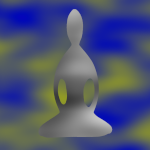Dear Friends,
Yesterday’s post listed five common categories of challenges we may encounter in our meditation — and in life.
Today, I’ll offer a few ideas of ways we can work with these challenges.
The first thing is to recognize that these are habitual states of mind, so we don’t have to make this a problem. We do want to notice when a challenging state is present. We can recognize the attitude we have with this challenging state… are we meeting this difficult state with more resistance?
And also to notice when the state is not there! Enjoy those moments too.
I’ll list a few strategies my training colleagues and I brainstormed for each at our most recent training module in December.
Desire for pleasurable experience
- Notice what is pleasant in this moment, that there is enough in this moment.
- Practice the opposite of gratitude or generosity.
- Reflect on the ultimate unsatisfactory nature of whatever we are desiring. The new car will get scratched; the ice cream will be gone and we’ll be hungry again.
- Pause and notice the anticipation and excitement, and then notice what happens next.
- Get familiar with the energy of desire. Hang out in the dynamism without being pulled into the object.
Resistance to disagreeable experiences, aversion
- Notice how painful the aversion might be and invite some compassion.
- Return to the body, breath, feeling of grounded into the earth.
- If related to a person, imagine the person as a child, their innocence.
- Notice the difference between the unsatisfactorness of the the object of the aversion compared to the unsatisfactoriness of the extra reactivity. (This is sometimes called the second arrow.)
Restlessness or worry
- Notice where there is contentment.
- Feel body and feet.
- Put some emphasis on the exhale, as that may invite some relaxation and letting go. Offer the restlessness on the out breath.
- Engage in some activity before sitting to meditate.
- Focus on sounds to allow a sense of expansiveness.
- Be willing to be the first meditator to die of restlessness.
Sleepiness or dullness
- Open the eyes to let in more light.
- Put some emphasis on the inhale, as that may invite some energizing.
- Adding some directed attention, such as noting or counting the breaths.
- Changing posture – sitting taller, raising arms over the head, standing.
- Imagining the body in motion may bring a little brightness.
- Walking meditation.
- Be curious about what sleepiness or dullness really feels like.
Skeptical doubt
- Labeling doubt as doubt and not getting caught in the story of the doubt.
- Come back to the present moment experience.
- Borrowing the confidence a friend or teacher has in our ability to do this.
- Being inspired by teachers.
- Attending to just this breath, and now just this breath.
- Splash some water on your face.
- When not meditating, ask questions, read, or talk to teachers.
- Trust in the goodness of your practice.
If you want to try a guided meditation, here is a 25-minute guided meditation by Shaila Catherine that explores ways of recognizing and working with the five challenging states (she calls them hindrances), and she uses a bit different terminology: sensual desire, anger, restlessness, sloth and torpor, and doubt.
https://www.dharmaseed.org/teacher/163/talk/54143/
I’m sure you have strategies of your own. Let’s build a toolkit together! Post a comment or send me an email, and I’ll add a comment with all the emailed suggestions.
With good wishes,
Andrea

As I get some replies, I’ll add as comments here…
“I am a sugar/chocolate lover so I remind myself that I don’t have to eat that today, I have had other days that I have had the mental strength to skip sugar/chocolate and I can do it again, and then I go for a walk or exercise. It helps to build my mental and physical strength.”
“When tired, I sometimes tug on my ear or rub my hands.”
“For aversion, I may turn to a practice like loving kindness, to cultivate the opposite state of mind.”
“I sometimes struggle with boredom. I try to pay even closer attention to the experience, like I’m looking with a microscope.”
“For fear and anxious thoughts, I like Byron Katie’s questions: Is it true? Can I know that this is absolutely true? Who would I be without that thought?”
To add to the list for Sleepiness or Dullness: One of my teachers taught us to press the tip of our tongue hard on the roof of our mouth.
Thanks Lisa. I will have to try that one!